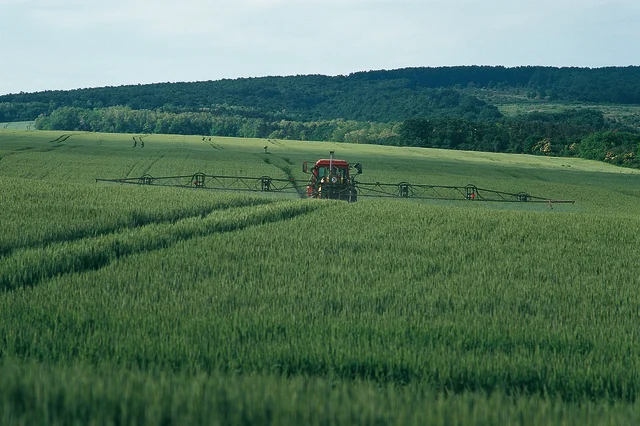Published on 5th April 2022
Weed Management
Top sprayer tips: How to maximise returns from fungicides through spray application

Fungicides provide some of the biggest returns on investment of all crop protection products for farmers
Fungicides provide some of the biggest returns on investment of all crop protection products.
The key to maximising that return starts with timing, says Roger Bradbury, Bayer market development manager for cereals.
“Application practice is one component of achieving best efficacy, but if you get your timing wrong it is likely game over,” he says.
Dissecting plants and counting leaf layers is the best way for checking timing at T1 – you’re looking to spray when leaf three is fully emerged. At T2 its flag leaf fully emerged, while for T3 ear sprays usually its early to mid-flowering.
The early sprays in the programme are important, Mr Bradbury stresses, especially with the most effective multisite chlorothalonil no longer available. “If you get them wrong either in timing, product choice or application you’re putting the rest of the programme under pressure.”
The primary target – leaf three – is usually relatively upright. “It’s reasonably analogous to trying to hit a black-grass plant. Alternating forward and backward nozzles is a good way to coat the target.”
Sprayer operator Iain Robertson, who covers 400ha of arable with a Househam sprayer, agrees alternating nozzles is a good set up. At T1 and T2 he alternates them to get good coverage.
“I’m aiming to get as good coverage as possible. I tend to use Guardian Air nozzles because they give the finest droplet size for an air induction which gives a wider operating window to apply the product at the correct time.
“You’re slightly compromising the droplet size, but I would rather the droplets hitting the target than drifting away.”
Air inside the droplet means droplets from air induction nozzles “explode” when they hit the target to provide good coverage, he adds.
Ideally cultivations in the autumn will have made the field as level as possible to allow a forward speed of 12-14 km/h – slightly faster than he would typically go with herbicides – with an operating pressure of 2-3 bar and a water volume of 100 L/ha.
“Tyre pressures should be soft enough to give you a smooth ride, but not so soft that the sprayer is swaying all over the place, and the boom suspension set properly so the boom rides nicely.”
That set up is a good base for most fungicide applications, he says, but he makes some minor tweaks for T0 and T3 sprays.
“At T0 if weather allows, I’ll potentially use a Defy 3D nozzle to get slightly better coverage, but once the plant starts extending, I go with the Guardian Air.
“At T3, rather than alternating forward and back, I have them all facing backwards. They were originally designed for this application – by angling backwards it negates your forward speed and covers the whole of the ear.”
Survey suggests air induction nozzles popular
Nearly two-thirds of around 50 respondents to a Bayer survey of sprayer operators indicated they were using air induction nozzles, with 41% choosing to angle these in some configuration.
Overall, 63% were angling their nozzle choice, whether that was flat fan or air induction, at T1 and T2, and that increased slightly to 70% for T3 ear sprays.
A forward speed of 12 km/h was most popular for this application – 65-69% choosing this speed, with a further 21-22% going faster, making it the application type where sprayer operators felt most confident in travelling faster.
The vast majority of operators were using 100 L/ha water volume for fungicide sprays.
Why are we doing this series?
While a lot of attention is rightly placed on product choice, it’s important to maximise the output from this investment – the difference between good and poor spray application can potentially have a significant influence on the performance of the treatment
There are a lot of factors that will influence that success – some within the control of the sprayer operator and others outside. These include physical losses of whatever you are trying to apply through things like drift, run-off and bounce, and chemical losses caused by hard water, pH and light degradation, for example.
On top of that are field factors, such as the target’s characteristics like shape, structure and size, and weather that all might affect performance. By the time the spray reaches its intended target the final dose could be very different to what it was when put into the sprayer.
Minimising those losses and maximising the amount reaching the intended target will make a big difference to the success of a spray.
In this series of blogs, we will look at six common application tasks for arable growers and delve into the best current advice for that application, plus a look at important considerations for setting up a sprayer for success.
Blog 6 in the series of Top Sprayer Tips for the Season Ahead focuses on how to safely apply glyphosate to standing crops.



